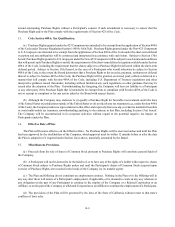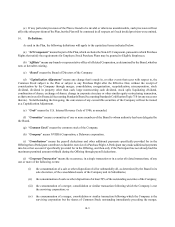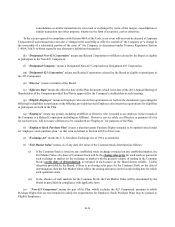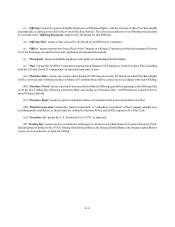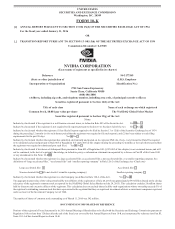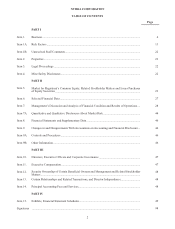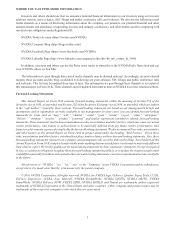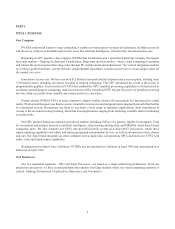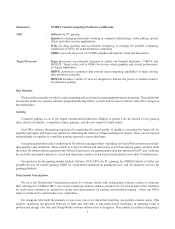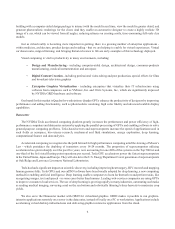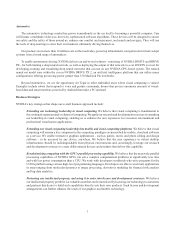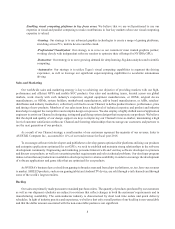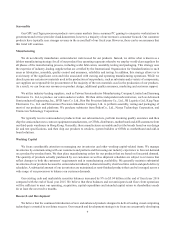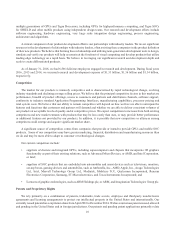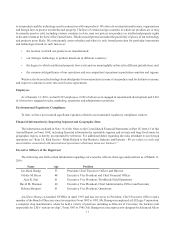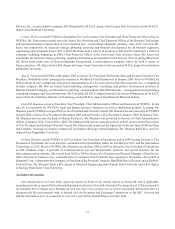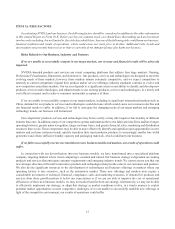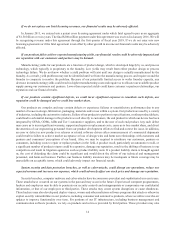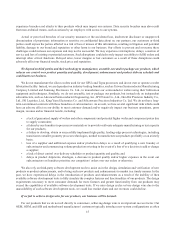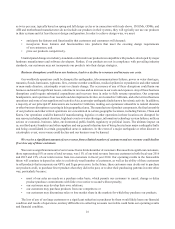NVIDIA 2016 Annual Report Download - page 152
Download and view the complete annual report
Please find page 152 of the 2016 NVIDIA annual report below. You can navigate through the pages in the report by either clicking on the pages listed below, or by using the keyword search tool below to find specific information within the annual report.6
building with a computer-aided design package to interact with the model in real time, view the model in greater detail, and
generate photorealistic renderings for the client. And they enable an automotive designer to create a highly realistic 3D
image of a car, which can be viewed from all angles, reducing reliance on creating costly, time-consuming full-scale clay
models.
Just as virtual reality is becoming more important in gaming, there is a growing number of enterprise applications -
within medicine, architecture, product design and retailing - that we are helping to enable for virtual experiences. Virtual
car showrooms, surgical training, and bringing historical scenes to life are early examples of this technology deployed.
Visual computing is vital to productivity in many environments, including:
• Design and Manufacturing - including computer-aided design, architectural design, consumer-products
manufacturing, medical instrumentation and aerospace
• Digital Content Creation - including professional video editing and post production, special effects for films
and broadcast-television graphics
• Enterprise Graphics Virtualization - including enterprises that virtualize their IT infrastructure using
software from companies such as VMware, Inc. and Citrix Systems, Inc., which are significantly improved
by NVIDIA GRID hardware and software
Our brand for this market is Quadro for workstations. Quadro GPUs enhance the productivity of designers by improving
performance and adding functionality, such as photorealistic rendering, high color fidelity and advanced scalable display
capabilities.
Datacenter
The NVIDIA Tesla accelerated computing platform greatly increases the performance and power efficiency of high-
performance computers and datacenter systems by applying the parallel-processing of GPUs and enabling software to solve
general-purpose computing problems. Tesla-based servers and supercomputers increase the speed of applications used in
such fields as aerospace, bio-science research, mechanical and fluid simulations, energy exploration, deep learning,
computational finance and data analytics.
Accelerated computing is recognized as the path forward for high performance computing amid the slowing of Moore’s
Law - which postulates the doubling of transistors every 18-24 months. The proportion of supercomputers utilizing
accelerators has grown sharply over the past five years, now accounting for one-fifth of the systems on the Top 500 list and
one-third of the list’s total floating-point operations per second. Tesla GPU accelerators power the fastest supercomputers
in the United States, Japan and Europe. They will also drive the U.S. Energy Department’s next generation of supercomputers
at Oak Ridge and Lawrence Livermore National Laboratories.
Tesla has had a significant impact on scientific discovery, including improving heart surgery, HIV research and mapping
human genome folds. Tesla GPUs and our cuDNN software have been broadly adopted for deep learning, a new computing
method for enabling artificial intelligence. Deep learning enables computers to learn for themselves and perform tasks, like
recognizing images, text and speech - in some cases better than humans. Leading web-services companies are using GPUs
to improve consumer cloud services. The use of deep learning is growing rapidly in many industries, automating such tasks
as reading medical imaging, surveying coral on the sea bottom and robotically thinning lettuce harvests to maximize crop
yields.
We also serve the Datacenter market with GRID for virtualized graphics. GRID makes it possible to run graphics-
intensive applications remotely on a server in the datacenter, instead of locally on a PC or workstation. Applications include
accelerating virtual desktop infrastructures and delivering graphics-intensive applications from the cloud.


